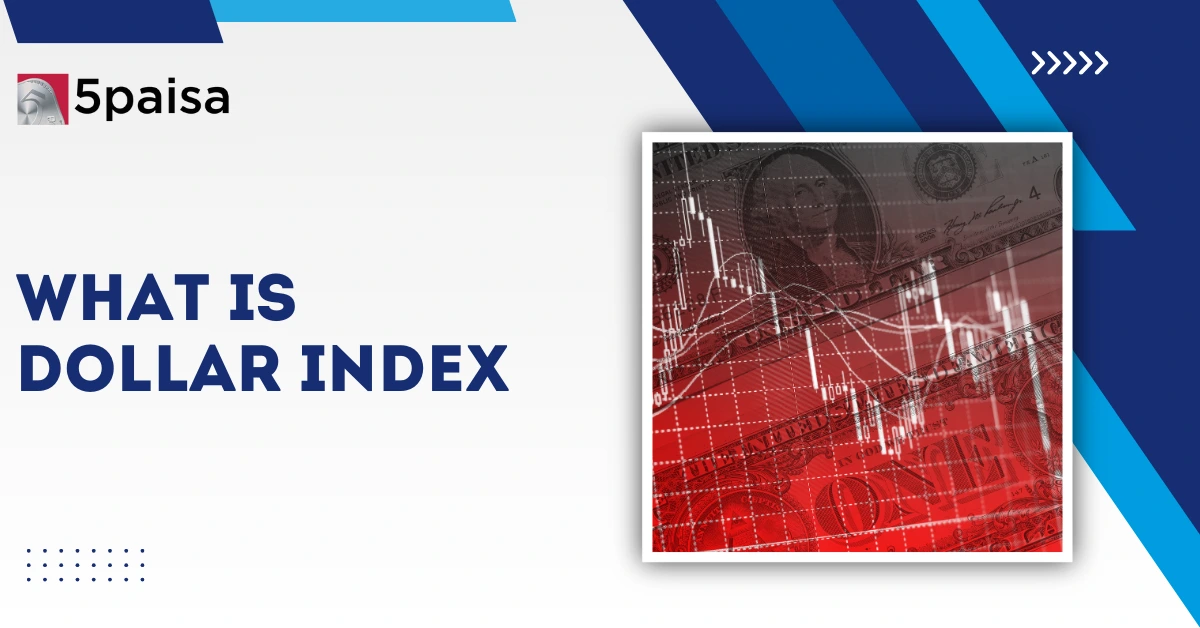Content
If you are wondering about the strength of the US dollar, the Dollar Index (DXY) is a measure that gives us the answer by comparing it to a few of the world’s top currencies. It is important to know what the US Dollar Index is as it can influence global trade and a lot of other factors. In this article, let us understand what the Dollar Index is, how it works, and why it matters to you.
Unlock the full article - sign in with Gmail!
Expand Your Market Knowledge with 5paisa Articles
What is the US Dollar Index (USDX)?
The Dollar Index serves as a benchmark for evaluating the overall strength or weakness of the US dollar in relation to a basket of currencies. This index was established by the US Federal Reserve in 1973 and is now maintained by the ICE Data Indices which is a subsidiary of the ICE (Intercontinental Exchange).
The index is calculated by taking a weighted geometric mean of the exchange rates between the US dollar and six major currencies: the euro, Japanese yen, British pound, Canadian dollar, Swedish krona, and Swiss franc.
How does the US Dollar Index Work?
The Dollar Index derives its value by calculating the weighted average of exchange rates involving six currencies: the euro, Japanese yen, British pound, Canadian dollar, Swedish krona, and Swiss franc.
The euro is by far the largest component of the index, taking up 57.6% of the basket. The remaining currencies in the index have the following weights: SEK (4.2%), CHF (3.6%), CAD (9.1%), JPY (13.6%), and GBP (11.9%).
The US Dollar Index measures the strength or weakness of the US dollar in the forex market. A rising index value implies a stronger dollar against the currency basket. On the contrary, a falling index value indicates a weaker dollar, signaling weakness.
History of the US Dollar Index (USDX)
The US Dollar Index (USDX) came into existence in 1973 when the Bretton Woods system, which fixed exchange rates to the US dollar, collapsed. The Bretton Woods system was an agreement that had tied global currencies to the US dollar, which in turn was backed by gold. When this system ended, countries moved to floating exchange rates, meaning their currency values were determined by the market rather than being fixed to the dollar or gold.
To adapt to this shift and provide a benchmark for the US dollar's strength, the Intercontinental Exchange (ICE) introduced the Dollar Index. Initially, the base of the index was set at 100 and all the other values were relative with the base.
The composition of the currencies included in the index were revised once in 1999 when “euro” replaced many currencies like the Italian lira, German mark, French franc, Belgian franc and Dutch glider.
Interpreting the US Dollar Index
The US Dollar Index (USDX) has a baseline value of 100, reflecting a relatively stable dollar value. When the index surpasses 100, it indicates a strengthening dollar against the currency basket, whereas a value below 100 signifies a weakening dollar.
For instance, an index value of 110 indicates that there has been a 10% appreciation in the US dollar. This is in comparison to the other currencies in the basket, over a specific time period.
How to Trade the US Dollar Index?
Trading the US Dollar Index enables you to gauge the strength or weakness of the US dollar compared to a group of major currencies. One of the most direct methods to trade the index is through futures and options contracts available on the Intercontinental Exchange (ICE), which allow participants to speculate or hedge against broad movements in the dollar. You can also look at ETFs and mutual funds that track the performance of this index.
No matter which investment method you choose, traders generally rely on technical indicators and fundamental factors like interest rate decisions or economic data to guide their strategies while trading in the segment.
What affects the price of the US Dollar Index?
Various elements like interest rate changes, economic indicators, geopolitical occurrences, market sentiment towards the US dollar, monetary policy decisions of the US Federal Reserve, etc. affect the value of the US Dollar Index (USDX). Additionally, broader global economic trends play a role in influencing the USDX. Collectively, these factors interact to shape the dynamics and volatility of the USDX's value.
How does the US Dollar Index Impact the Indian Rupee?
Fluctuations of the US Dollar Index generally tends to significantly impact the Indian Rupee. When the index rises, it signals a stronger US dollar, which generally puts downward pressure on emerging market sovereign currencies.
Imported commodities like crude oil, which are priced in dollars, can potentially become costlier for India, which may lead to trade imbalances and inflation. On the flip side, if the USDX weakens, the INR may gain strength, improving purchasing power parity and easing import costs.
Conclusion
When it comes to understanding what is dollar index, it is essential to know that it plays a vital role in measuring the relative strength of the US dollar when compared to major currencies. Its extensive adoption by traders, investors, and economists highlights the important role it plays in analyzing market trends and shaping decision-making within the foreign exchange market.



